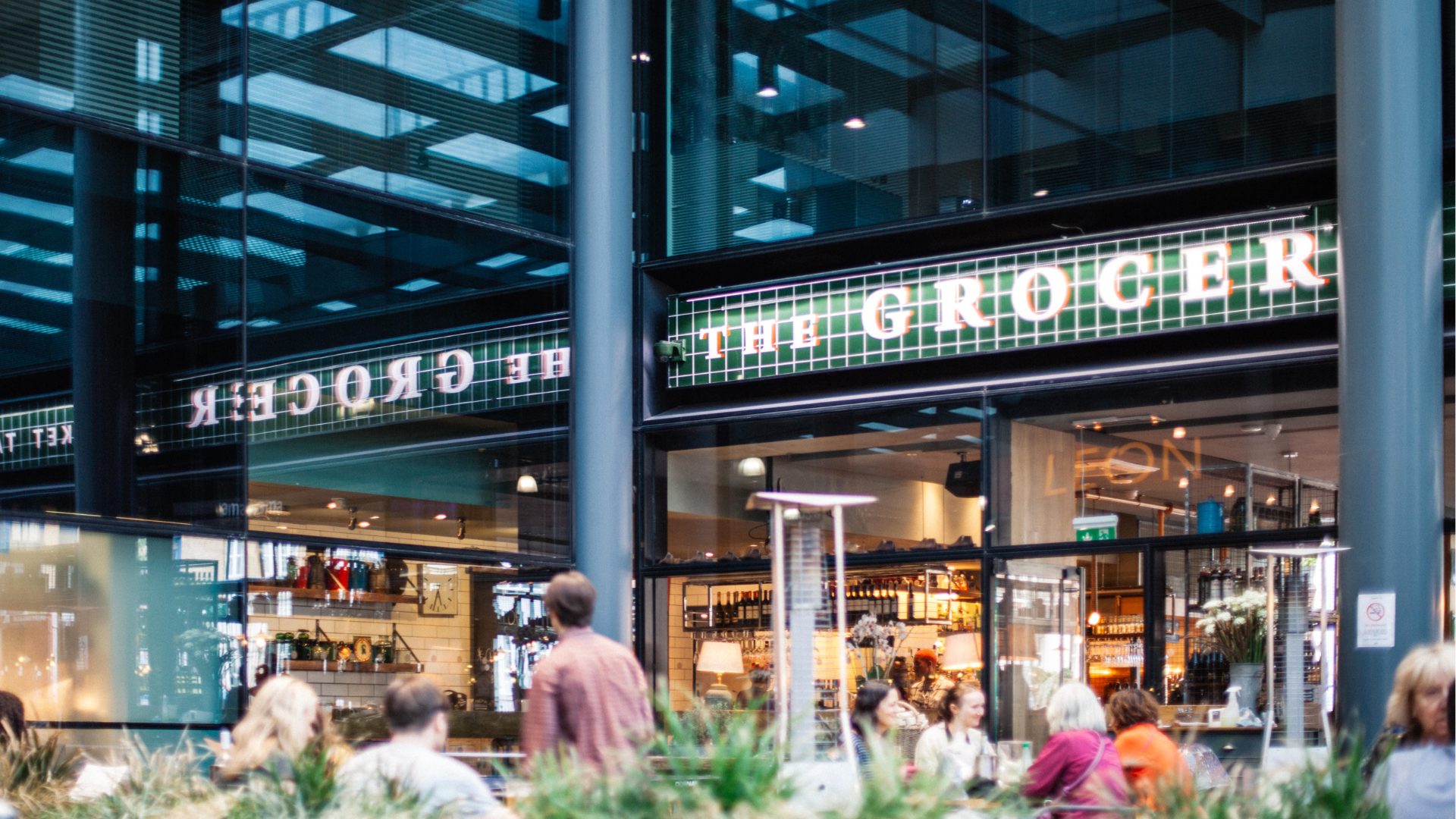Following the earnings call last Tuesday, Albertsons stock finished the week up about 2.5% – but the stock took a winding road to get there. Shares originally fell nearly 8% on Tuesday, the day after the company’s fiscal fourth quarter release, before bouncing back over the following two trading sessions.
At first glance, the fall seems to make more sense than the bounce. Results for the fourth quarter were fine, but the company’s outlook for fiscal 2025 (which ends February 2026) is disappointing. The company sees same-store sales growing just 1.5-2.5%. More importantly, Adjusted EBITDA is guided to $3.8-$3.9 billion, and even that range includes an estimated $65 billion boost from a 53rd week in the fiscal year. (EBITDA, or “earnings before interest, taxes, depreciation, and amortization,” is a measure of profit that focuses as purely as possible on the operating business instead of financial effects. It also excludes one-time items such as the cost of the company’s aborted merger with Kroger.)
The profit guidance for FY26 was a few percentage points below Wall Street expectations – but it’s the long-term trend that’s the larger concern. In the last few years of the 2010s, Albertsons increased its EBITDA by about 1% a year. That level of growth wasn’t disastrous in the context of an economy with minimal inflation – rival Kroger saw its profits decline over the same period – but it wasn’t enough. The chain’s private equity owner, Cerberus Capital Management, was trying to get the company back to public over that period, but its results weren’t quite good enough.
The novel coronavirus pandemic of course changed the trajectory: In fiscal 2020, Albertsons EBITDA jumped an incredible 60%. Two years later, the company hit another peak. But there’s been a reversal since: FY25 almost certainly will be the third consecutive year of profit declines, with a cumulative plunge nearing 20% (excluding the boost from the extra week this year).
As at other points over the past decade, the external environment obviously plays a role in the company’s results. But questions remain about Albertsons itself at this point. Kroger is outperforming it, with its profits roughly flat over the same three-year period, and since Albertsons’ management re-started its earnings calls this year (as per usual practice, those calls were not held while the attempted merger with Kroger was underway), its own executives have not sounded particularly confident.
On the third-quarter earnings call in January, then-chief executive officer Vivek Sankaran put it bluntly: “We have a mass retailer and a club retailer that are growing much faster than us.” That reference, to Walmart and Costco respectively, gets to the heart of the challenge facing traditional grocers: Can they consistently compete with two of the best retailers (of any kind) in the world?
Pretty clear, Albertsons executives – including new CEO Susan Morris – think the primary answer to that question rests on the company’s ability to improve its pricing. There are other efforts, certainly. Albertsons is building out an advertising business, where even the company itself admits it has fallen behind, and is also investing in tech (including artificial intelligence). A massive productivity program targets $1.5 billion in cost savings over three years.
But all of that $1.5 billion – and then some, at least based on this year’s outlook – is going back into pricing. This is a more “surgical” effort, as Morris put it on the fourth-quarter call, with price gaps to competitors varying by both category and market. Overall, however, it is clear that both Wall Street analysts and Albertsons management believe the company needs to be more competitive on price.
And that is a change. Obviously, during the pandemic environment, price almost didn’t matter. As Randaran noted at a conference in 2021, there was no point in competing on promotions given there wasn’t enough incremental supply in most categories to meet higher demand. Before that, Albertsons management talked little about price; when prompted, management sounded quite comfortable with their competitive position.
Again, the external environment plays a role here. We wrote just last week about how the typical boost of “trading down” amid recessionary fears hasn’t yet played out for packaged foods giant General Mills. There’s a similar sense here: Like one of its key suppliers, Albertsons is also talking about a customer who’s reaching for value. For the grocer, one problem at the moment is that the search for value primarily is coming from within its stores, by trading down, rather than with a shift by customers to its stores from food-away-from-home options.
With so much negativity in terms of multi-year results, the outlook, and the operating environment, the question probably isn’t why Albertsons stock fell 7-plus percent on Tuesday, but why it rallied back. The likely answer is somewhat counterintuitive: At least some investors believe in the opportunity that exists going forward, because Albertsons hasn’t delivered yet.
After all, for years there has been a real question in the market as to whether pure-play grocers can compete with giants like Costco and Walmart; the entire sector plunged (and stayed down for years) when Amazon announced it would buy Whole Foods in 2017. At other times, pressure from Dollar General and Dollar Tree has been a concern.
But the sector has mostly dispelled the core worry that pure-play grocers were headed for extinction. Kroger stock has outperformed the market over the past three and five years and sits at an all-time high. Sprouts Farmers Market has been one of the best stocks in the market; its stock has almost quintupled in three years. (Incredibly, its market capitalization is now greater than that of Albertsons.) If grocers can find their niche and their customer base, and execute them well, there is room for their profits and their share prices to grow.
Clearly, shareholders believe that Albertsons still has a path to do precisely that, as well as the potential to drive its own impressive returns going forward. And that likely explains the patience with the stock despite the disappointing outlook for the coming year. But management no doubt knows that patience won’t last forever.
Vince Martin is an analyst and author whose work has appeared on multiple financial industry websites for more than a decade; he’s currently the lead writer for Wall Street & Main. He has no positions in any securities mentioned.
The Food Institute Podcast
It’s tariff time, and companies the world over are working to better understand how their operations will be impacted. Jodi Ader from RSM US LLP joined The Food Institute Podcast to discuss which products and inputs are currently subject to tariffs, and how to best mitigate supply chain risks.











